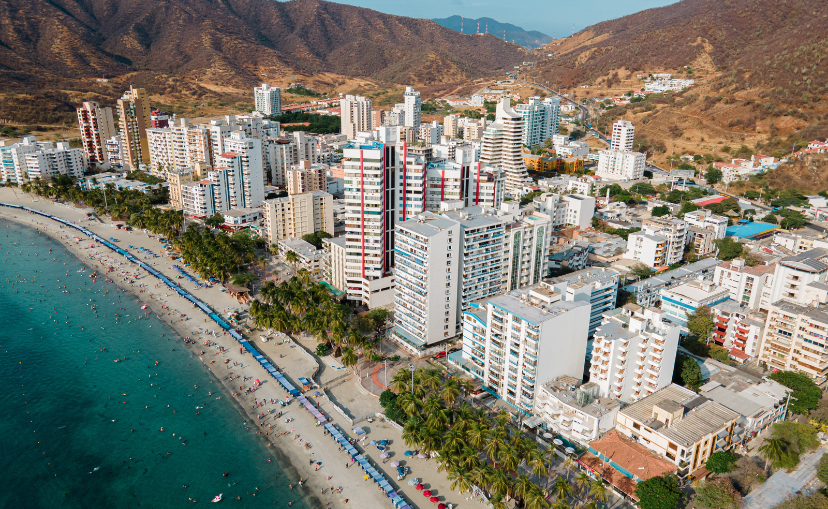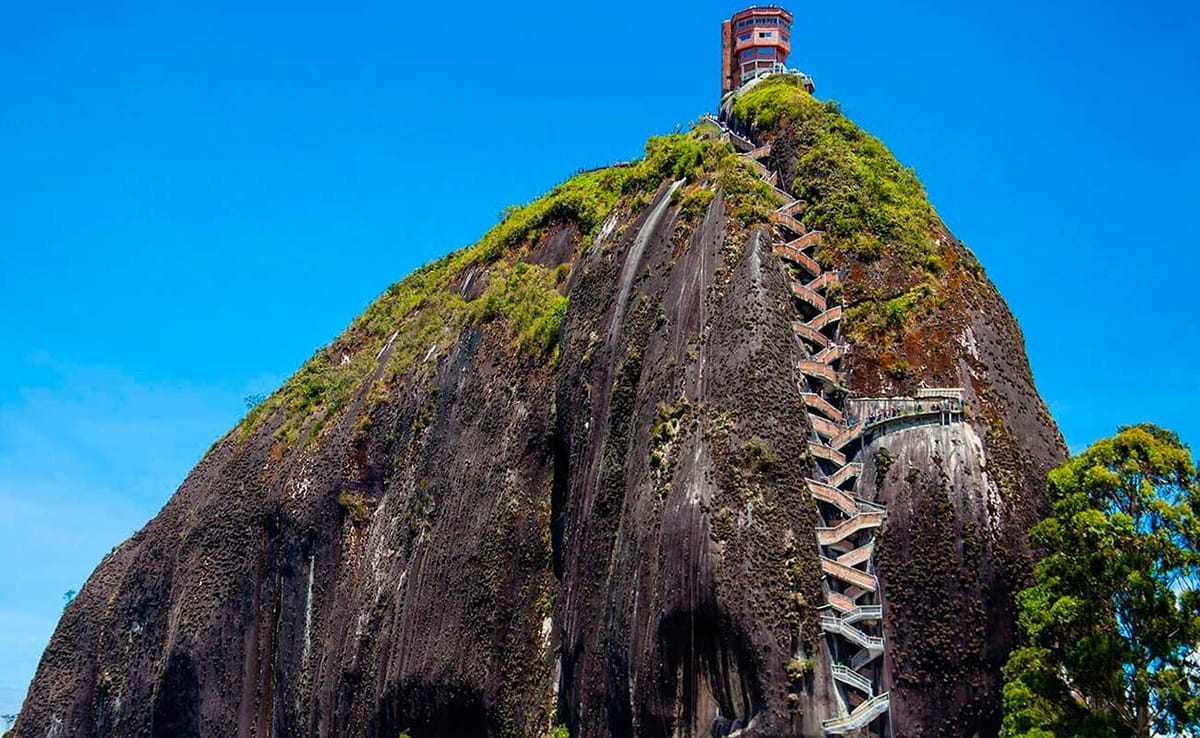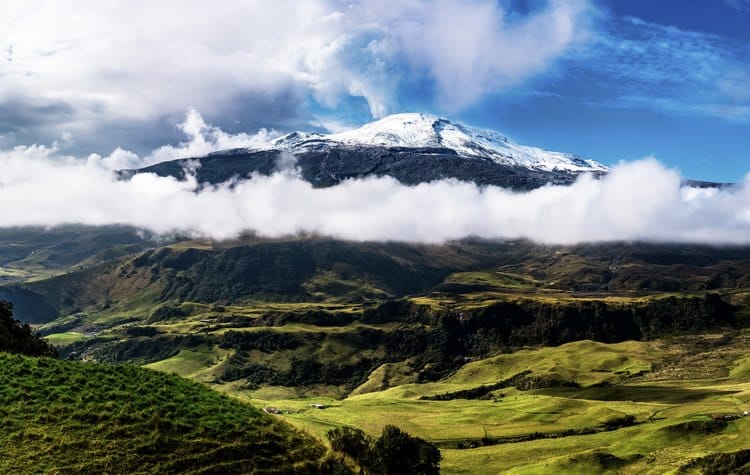10 Most Beautiful National Parks In Colombia
Discover the most beautiful national parks in Colombia, from pristine coral reefs to misty Andean peaks and rainbow rivers.

Colombia is packed with breathtaking landscapes, but it's national parks truly stood out to me. If you’re planning a trip, hers are Colombia's most beauitufl national parks you won't want to miss.
Tayrona National Park
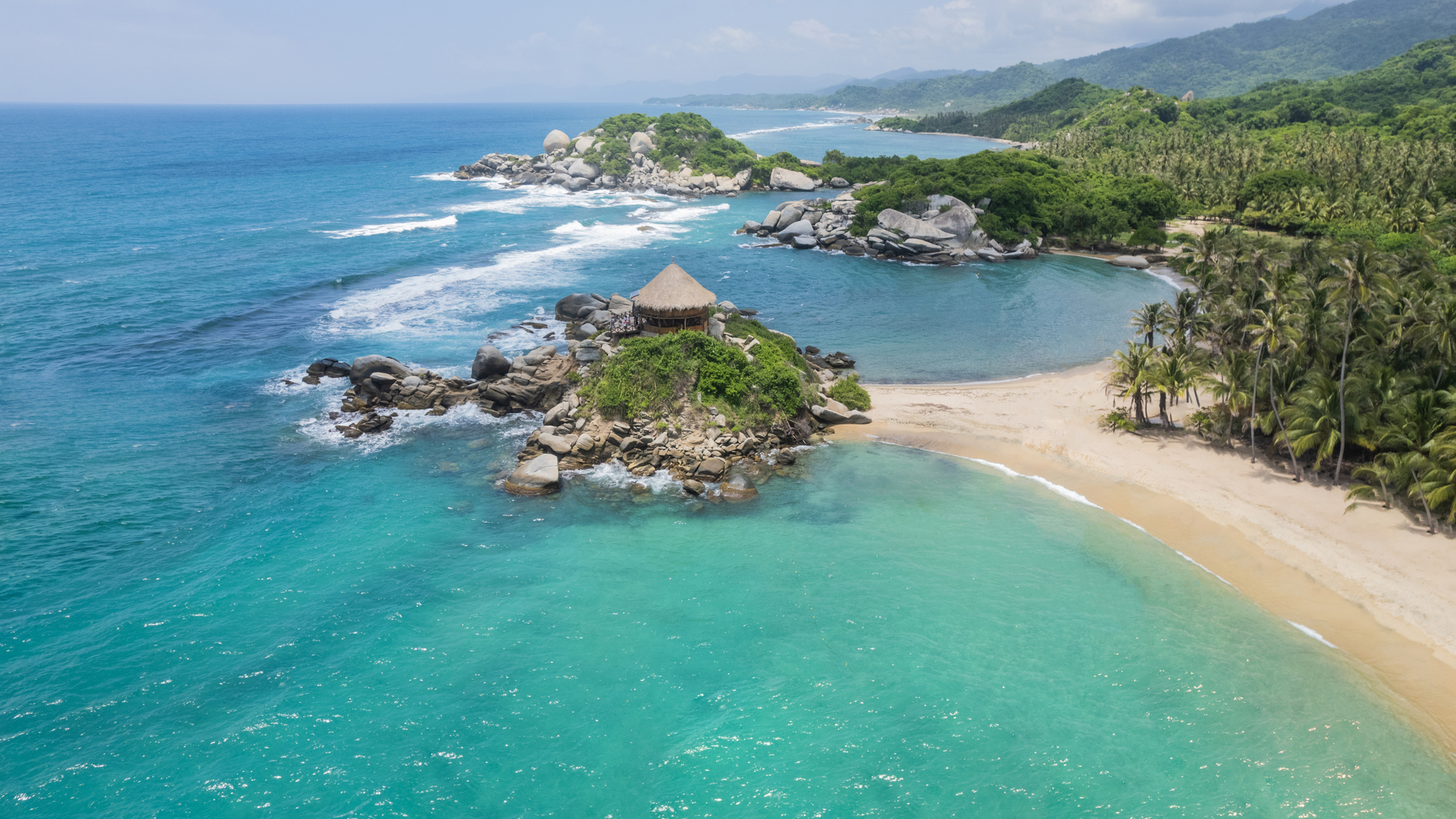
Tayrona National Park is where the Caribbean Sea meets the Sierra Nevada de Santa Marta, blending powdery white beaches, dense rainforest, and dramatic cliffs. Covering 150 square kilometers, the park is famous for its turquoise waters, boulder-strewn shores, and palm-fringed beaches like Cabo San Juan, perfect for swimming, and Playa Brava, known for its wild beauty.
Trails wind through jungle alive with howler monkeys and over 300 bird species, including keel-billed toucans. Tayrona is home to rare wildlife like the cotton-top tamarin and colorful coral reefs offshore, making it a haven for nature lovers. Ancient indigenous ruins, such as Pueblito, add a cultural layer to the landscape. The best time to visit is the dry season (December to March), when hiking and exploring hidden coves is ideal. Tayrona’s mix of stunning shores, lush forests, and historical sites creates a truly unforgettable slice of Colombia’s natural beauty.
Highlights
- Stunning mix of Caribbean beaches, jungle, and mountains
- Iconic white sand beaches like Cabo San Juan and Playa Brava
- Over 150 sq km of protected land and sea
- Home to 300+ bird species, including toucans and parrots
- Wild residents include howler monkeys and rare cotton-top tamarins
- Lush rainforests and boulder-strewn coves perfect for hiking
- 110 coral species in crystal-clear waters for snorkeling and diving
- Ancient indigenous ruins at Pueblito for a glimpse into Tayrona culture
- Best visited in the dry season (Dec–Mar) for sun and easy trails
- Unforgettable scenery where jungle meets the turquoise sea
Los Nevados National Park

Los Nevados National Park stretches across Colombia’s Coffee Region, offering dramatic snow-capped peaks, unique páramo landscapes, and steaming volcanoes like Nevado del Ruiz. Covering 58,000 hectares, the park features glacial lakes, hot springs, waterfalls, and meadows where Andean condors soar. The distinctive páramo ecosystem is filled with spiky frailejones, while temperate forests below shelter orchids and towering wax palms.
Trails lead to sacred indigenous sites like Valle de las Tumbas and scenic hikes such as the route to Laguna del Otún, known for its mirror-like lake views. Dry seasons (December–February, June–August) are ideal for trekking, while the wet season enhances the park’s greenery and waterfalls. Los Nevados is a paradise for hikers, with everything from day trips to challenging multi-day adventures among mist, volcanoes, and ancient rituals—a truly breathtaking high-altitude experience in Colombia.
Highlights
- Spectacular snow-capped Andean peaks and active volcanoes
- Vast páramo ecosystem dotted with unique frailejones plants
- Glacial lakes, alpine meadows, and cascading waterfalls
- Home to Andean condors, orchids, and Colombia’s national wax palm
- Hot springs and geothermal activity throughout the park
- Sacred indigenous sites like Valle de las Tumbas
- Hiking trails for all levels, including treks to Laguna del Otún
- Best visited during dry seasons for clearer views and easier hiking
- Elevation ranges from 2,600 to 5,300 meters, offering diverse climates
- Ethereal landscapes where mist, rock, and sky meet in dramatic fashion
Sierra Nevada de Santa Marta National Park
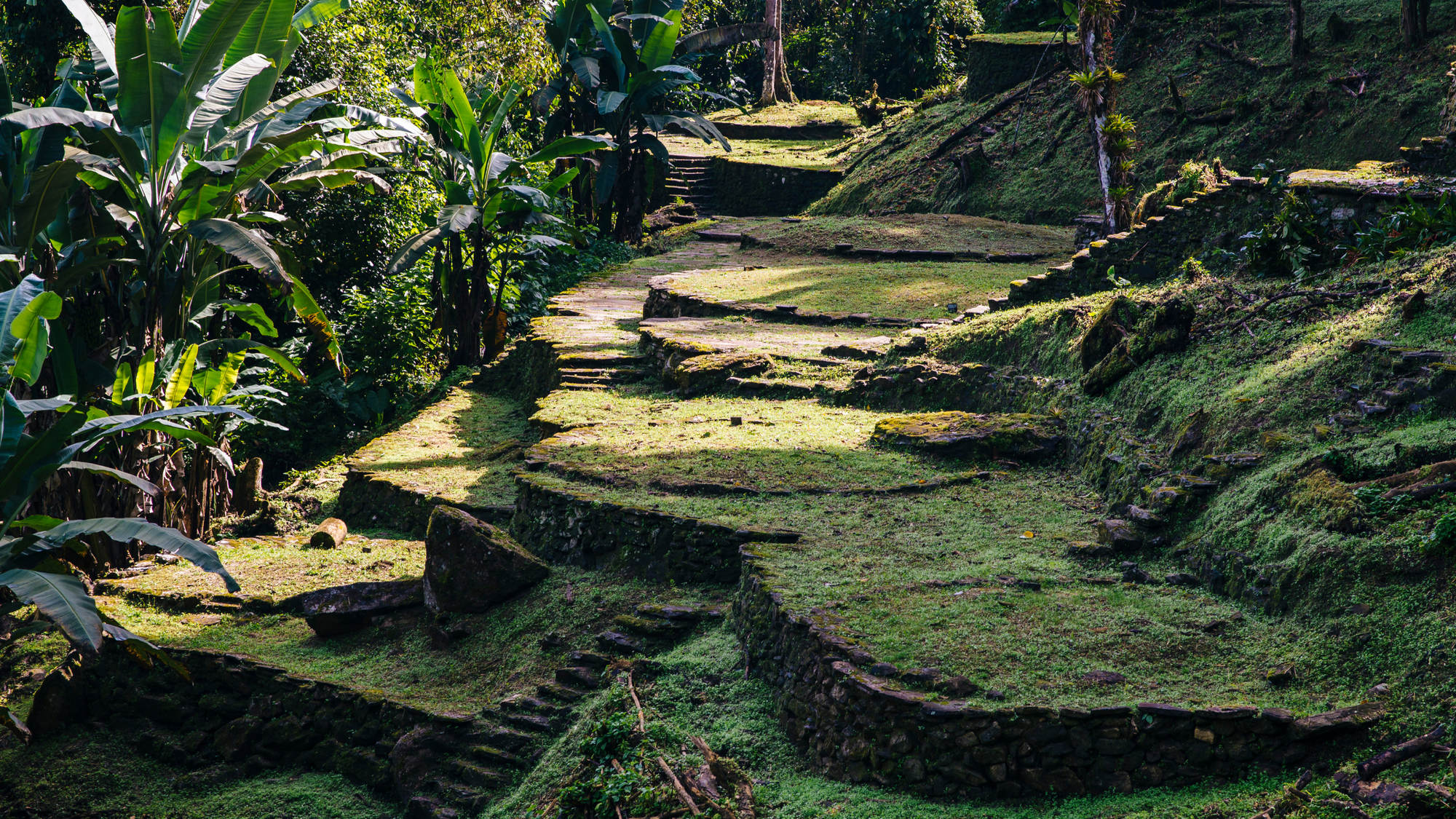
Sierra Nevada de Santa Marta National Park rises from the Caribbean coast to Colombia’s highest peaks, including Pico Cristóbal Colón at 5,700 meters. Spanning 383,000 hectares, this park is famed for its dramatic cloud forests, alpine meadows, and glacier-capped summits. It’s a sacred homeland to indigenous peoples like the Kogi and Arhuaco, earning it the title “Heart of the World.” Dense jungles shelter jaguars, tapirs, and over 600 bird species, while hidden waterfalls and high-altitude lagoons offer breathtaking scenery.
The park’s biodiversity ranges from tropical lowlands to snowy peaks, with the dry season (December–March) being the best time for trekking. A major highlight is the Lost City (Ciudad Perdida), an ancient archaeological site reached by a challenging multi-day hike. The park’s remoteness preserves its wild, untouched beauty and deep cultural heritage.
Highlights
- Colombia’s highest peaks, including Pico Cristóbal Colón (5,700m)
- Vast 383,000-hectare park with cloud forests, meadows, and glaciers
- Deep spiritual significance as home to Kogi, Arhuaco, and other indigenous groups
- Incredible biodiversity: jaguars, tapirs, and 600+ bird species
- Stunning waterfalls, crystal-clear pools, and high mountain lagoons
- Diverse ecosystems, from tropical jungle to snowy summits
- The Lost City (Ciudad Perdida): ancient ruins accessible by multi-day trek
- Best trekking season is December to March (dry season)
- Pristine, remote, and largely untouched wilderness
- Unique blend of natural wonders and living indigenous culture
El Cocuy National Park
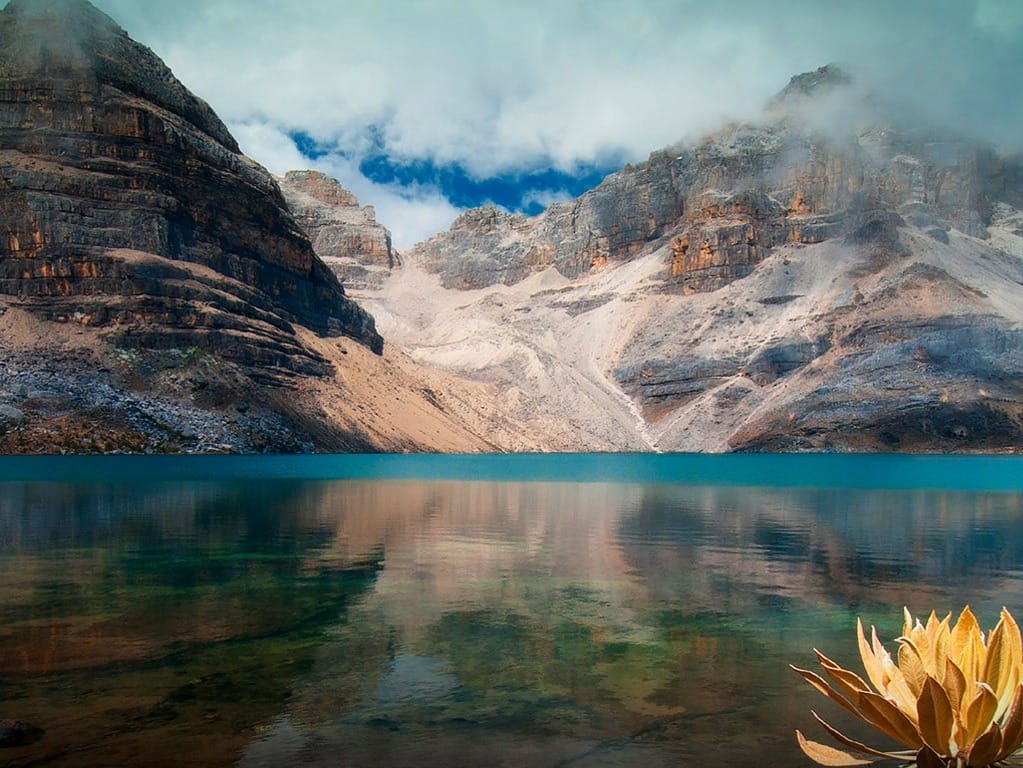
El Cocuy National Park is a breathtaking high-altitude expanse in Colombia’s Andes, famed for its jagged snow peaks, shimmering glaciers, and vast páramo landscapes. Spanning 306,000 hectares, the park features the Sierra Nevada del Cocuy with 25 peaks above 4,800 meters, including Ritacuba Blanco (5,410m). Visitors will find dramatic rock spires, alpine valleys, and pristine lakes like Laguna Grande de la Sierra.
The area is rich in wildlife, from spectacled bears to soaring Andean condors, and the páramo is dotted with iconic frailejones plants. Hiking options range from short walks to multi-day treks, all amid stunning vistas and a sense of solitude. The dry season (December–February) offers the best weather for climbing and hiking, while the wet season paints the lower slopes lush green. Accessible via El Cocuy or Güicán, the park is also home to U’wa indigenous communities and sacred sites, making it a destination where natural beauty and culture meet.
Highlights
- Jagged snow-capped peaks and over 25 summits above 4,800 meters
- Spectacular glaciers, alpine valleys, and clear mountain lakes
- Dramatic páramo ecosystems with unique frailejones plants
- Home to spectacled bears and Andean condors
- Variety of trails, from day hikes to week-long expeditions
- Stunning views of windswept plateaus and misty valleys
- Best conditions for hiking and climbing during the dry season (Dec–Feb)
- Remote and peaceful, with few visitors on the trails
- Accessible via the towns of El Cocuy or Güicán
- Rich indigenous U’wa culture and sacred mountain sites
Gorgona Island National Park
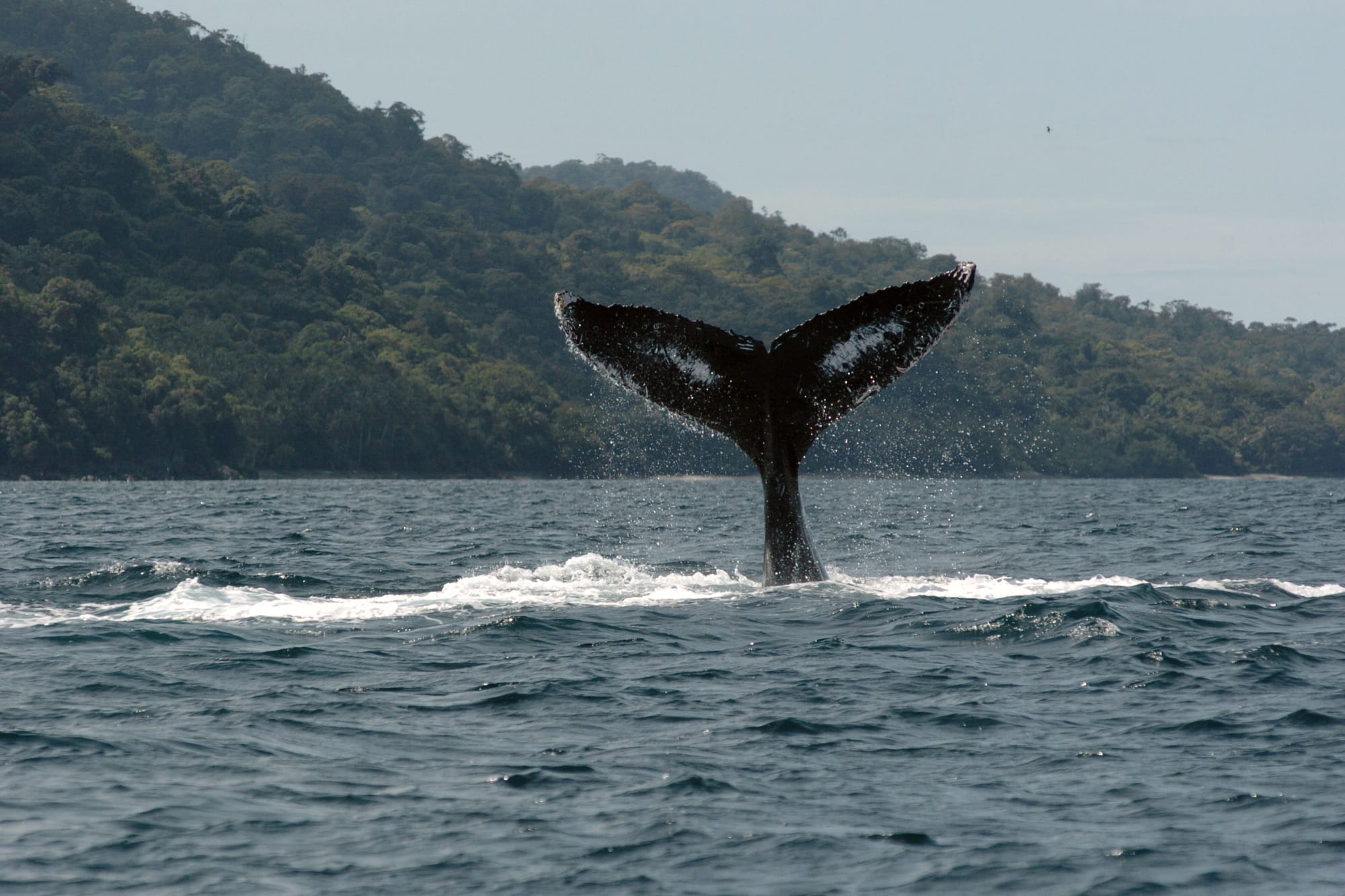
Gorgona Island National Park is a remote Pacific island off Colombia’s southwest coast, once a prison and now a marine sanctuary. Covering 60,000 hectares—mostly ocean—the park is known for emerald waters, black sand beaches, and lush rainforest.
It’s a biodiversity hotspot where humpback whales can be seen offshore from July to October, and coral reefs teem with sea turtles, sharks, and tropical fish. Inland, jungle trails reveal monkeys, sloths, blue lizards, and hidden waterfalls like Salto de la Reina.
The island’s abandoned prison ruins add a layer of intrigue to its natural wonders. Accessible only by boat from Guapi, Gorgona is a tranquil paradise ideal for snorkeling, diving, hiking, and whale watching. Its isolation ensures unspoiled shores and a peaceful, wild experience.
Highlights
- Remote Pacific island sanctuary, 35 km off Colombia’s coast
- Black sand beaches, turquoise waters, and vibrant coral reefs
- Humpback whale watching (July–October)
- Excellent snorkeling and diving with abundant marine life
- Dense rainforest home to monkeys, sloths, and blue lizards
- Scenic waterfalls, including Salto de la Reina
- Fascinating abandoned prison ruins in the jungle
- Accessible only by boat from Guapi, ensuring solitude
- Wet season (April–November) for waterfalls; dry season for diving
- Peaceful, untouched island atmosphere—perfect for nature lovers
Amacayacu National Park
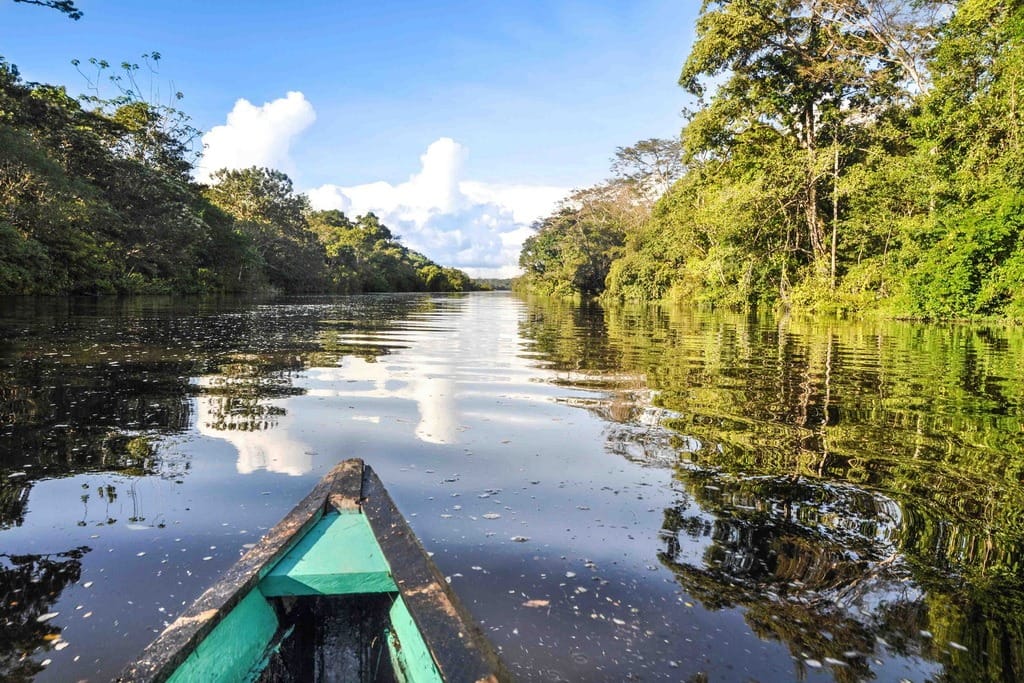
Amacayacu National Park is a vast Amazon jungle reserve spanning 293,500 hectares along the Amazon River, near Colombia’s borders with Peru and Brazil. This biodiversity hotspot is famous for pink river dolphins, jaguars, manatees, and over 500 bird species. Visitors can explore canopy walkways, hike through dense rainforest, or glide by canoe through surreal flooded forests during the wet season (December–May).
The park is also home to indigenous Ticuna communities, who share their culture and knowledge of the rainforest. The dry season (June–November) is ideal for hiking and wildlife spotting. Accessible from Leticia, Amacayacu offers a remote, wild atmosphere, eco-lodge stays, and an immersive Amazon experience surrounded by incredible flora and fauna.
Highlights
- Expansive Amazon rainforest park (293,500 hectares) on the Amazon River
- Incredible wildlife: pink river dolphins, jaguars, manatees, harpy eagles
- Over 500 bird species in a true biodiversity hotspot
- Canopy walkways through giant ceiba trees and thick jungle
- Flooded forests (Dec–May) perfect for canoeing among submerged trees
- Dry season (Jun–Nov) ideal for hiking and spotting wildlife on foot
- Indigenous Ticuna communities offer guided tours and cultural insight
- Remote, wild setting—accessed from Leticia by river
- Trails to remote lagoons and oxbow lakes for birding and nature watching
- Eco-lodges for a close, sustainable Amazon experience
Chingaza National Park
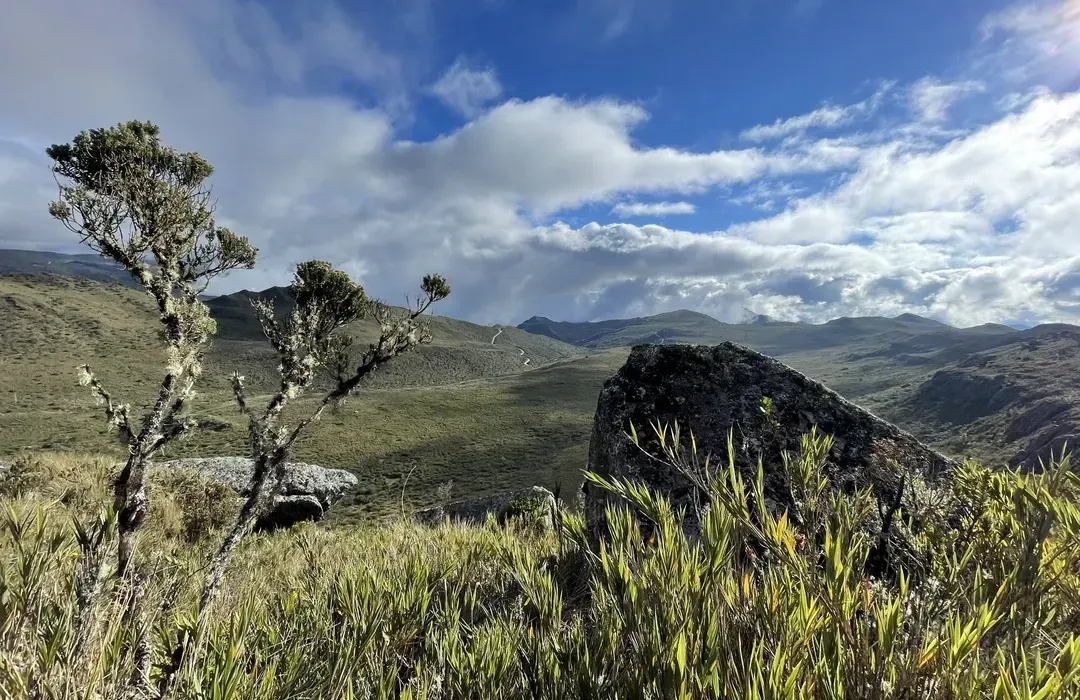
Chingaza National Park, near Bogotá, is a misty páramo sanctuary in the Andes near Bogotá, spanning 76,600 hectares at elevations of 3,000–4,000 meters. The park features cloud forests, alpine lakes like Laguna de Chingaza, and rolling highland plains dotted with unique frailejones plants.
As a vital water source for Bogotá, Chingaza is home to spectacled bears, Andean deer, and rare orchids. Visitors can hike foggy trails like Suasie, experiencing an ethereal landscape of silent valleys and rugged terrain. Dry seasons (December–March, June–August) are best for hiking, while the wet season brings even more lushness and flowing waterfalls. Despite its proximity to Bogotá, Chingaza offers a tranquil escape into Colombia’s mythical highland beauty.
Highlights
- High-altitude páramo landscapes close to Bogotá (76,600 hectares)
- Stunning alpine lakes, especially Laguna de Chingaza
- Misty cloud forests and valleys with unique frailejones plants
- Home to spectacled bears, Andean deer, and rare orchids
- Critical water source for Bogotá’s reservoirs
- Peaceful hiking trails like Suasie through fog-shrouded scenery
- Dry seasons offer clear trails; wet season brings vibrant greenery and waterfalls
- Ethereal, otherworldly atmosphere in the Andes
- Easily accessible from Bogotá yet feels completely remote
Serranía de La Macarena National Park
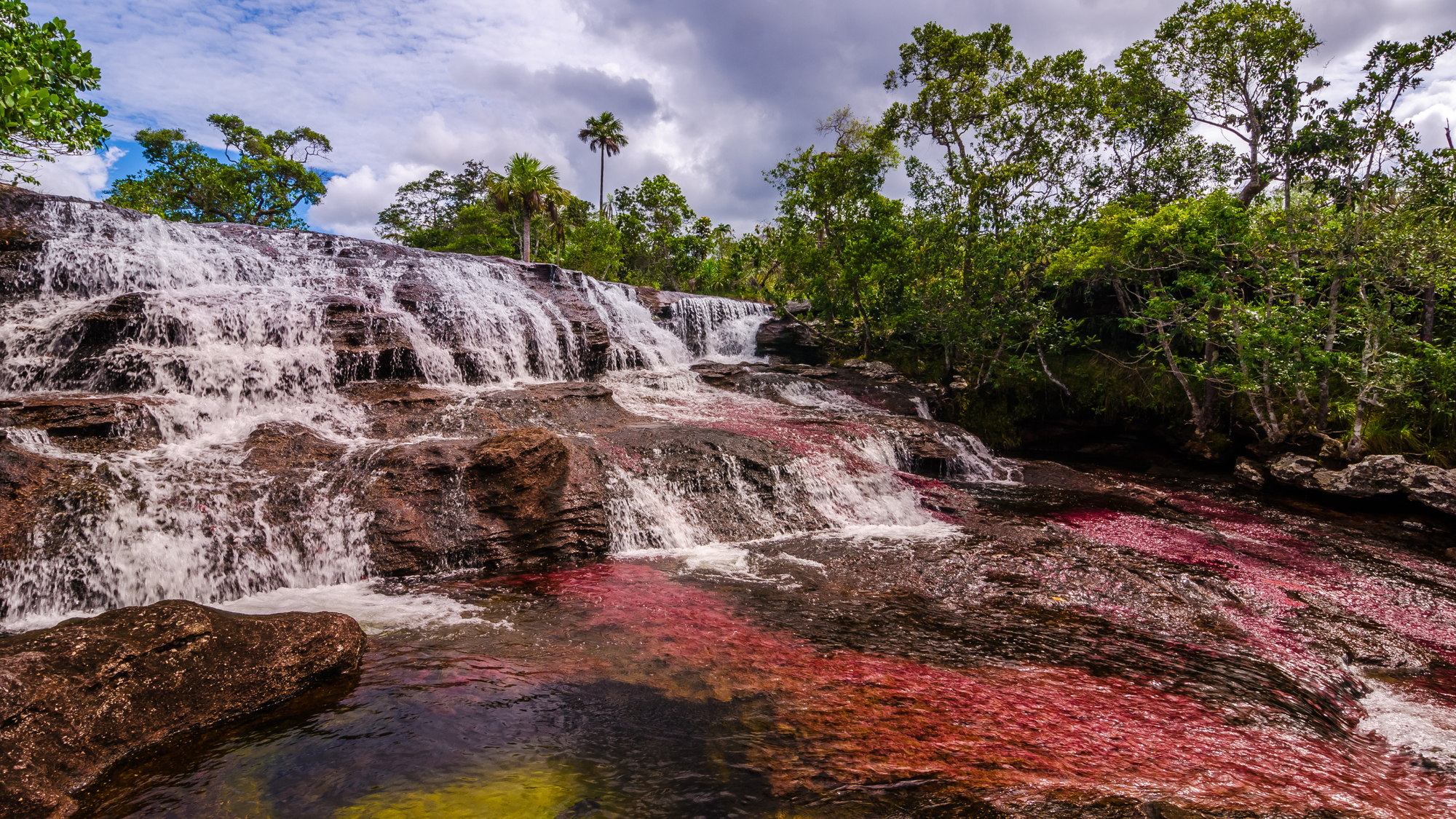
Serranía de La Macarena National Park is famed for Caño Cristales, the “River of Five Colors,” where aquatic plants and minerals create stunning rainbow hues from July to November. Spanning 630,000 hectares in Colombia’s Meta region, the park features a unique blend of Amazonian jungle, savanna, and ancient rock formations. Visitors can explore waterfalls, natural pools, and caves, and spot wildlife like jaguars, anteaters, and over 400 bird species. The park’s remote location, accessed via La Macarena town, preserves its pristine, otherworldly beauty, offering hiking, swimming, and unforgettable views of Colombia’s most colorful river.
Highlights
- Home to Caño Cristales, the vibrant “River of Five Colors”
- Rainbow waters visible July to November due to aquatic plants and minerals
- Expansive 630,000-hectare park in the Meta region
- Unique mix of Amazon jungle, savanna, and ancient rock formations
- Waterfalls, natural pools, caves, and panoramic lookouts
- Rich wildlife: jaguars, anteaters, and 420 bird species
- Remote and pristine, accessible via La Macarena town
- Best time to visit is the dry season (July–November) for river colors
- Offers hiking, swimming, and an immersive sense of discovery
- One of Colombia’s most breathtaking and surreal landscapes
Old Providence McBean Lagoon National Park
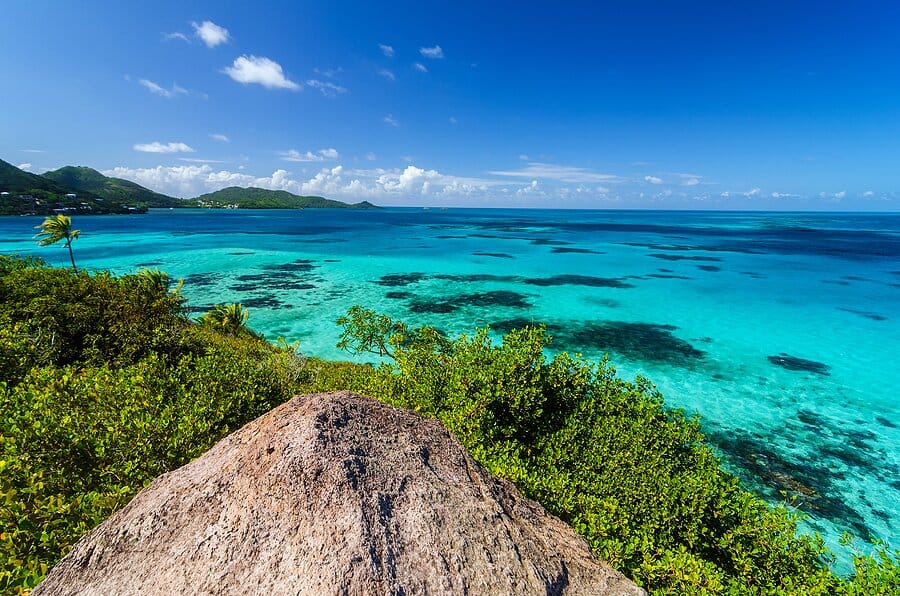
Old Providence McBean Lagoon National Park is a beautiful park in the Caribbean on Providencia Island, covering 995 hectares of coral reefs and turquoise lagoons. The park’s mangrove-lined lagoon and seven-colored sea, ranging from deep blue to pale green, create a stunning coastal landscape. Home to rays, turtles, and colorful fish, the marine zone is a snorkeler’s paradise. Inland, trails lead through mangroves and dry forests, where iguanas and crabs scuttle about. The dry season (December to April) is best for diving and kayaking, while the wet season adds lushness to the island’s greenery. Accessible via San Andrés, the park’s remote setting offers a tranquil escape, with its clear waters and vibrant reefs showcasing Colombia’s Caribbean beauty.
Old Providence McBean Lagoon National Park Highlights
- Located on Providencia Island in Colombia’s Caribbean
- 995 hectares of coral reefs, turquoise lagoons, and mangroves
- “Seven-colored sea” with striking blue and green hues
- Outstanding snorkeling and diving with rays, turtles, and colorful fish
- Inland trails through mangrove and dry forests with iguanas and crabs
- Dry season (Dec–Apr) best for kayaking, diving, and water sports
- Wet season brings lush greenery to the island
- Accessible via San Andrés for a peaceful, off-the-beaten-path escape
- Ideal for nature lovers seeking clear waters and vibrant reefs
Los Katíos National Park
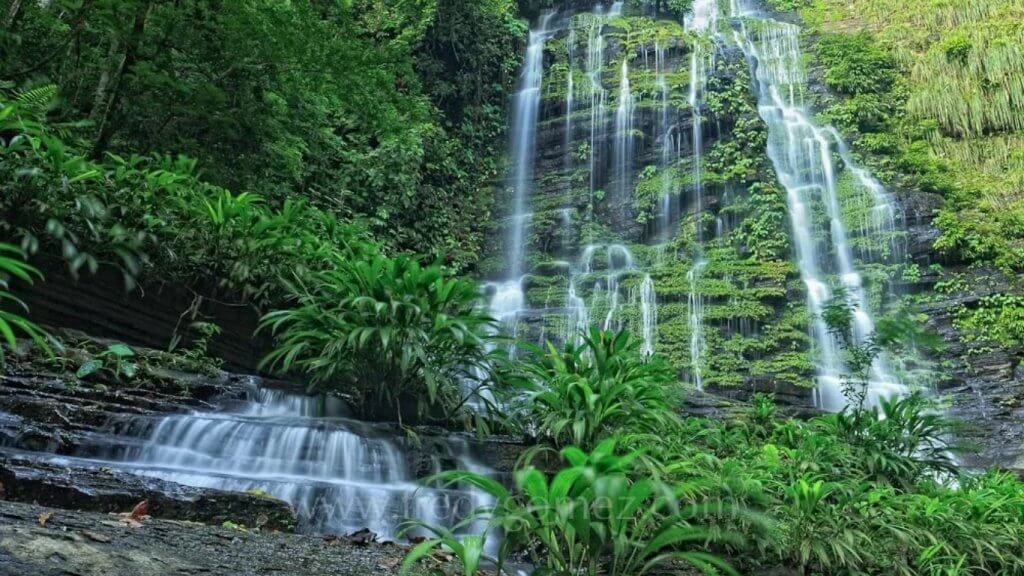
Los Katíos National Park, a UNESCO World Heritage Site near the Panama border, spans 72,000 hectares of dense rainforest and wetlands along the Atrato River. This park is a biodiversity hotspot, with jaguars, tapirs, and manatees roaming its jungles and marshes. Waterfalls like Salto de Tendales plunge into clear pools, while river channels offer canoeing through flooded forests.
The park’s lowland rainforest, one of South America’s most intact, supports 550 bird species and rare orchids. The wet season (April to November) brings fuller rivers, ideal for boating, while the dry season aids hiking. Accessible via Turbo, Los Katíos feels wild and untouched, with its lush greenery and serene waters offering a deep dive into Colombia’s natural splendor.
Los Katíos National Park Highlights
- UNESCO World Heritage Site on Colombia’s border with Panama
- 72,000 hectares of dense rainforest, wetlands, and river channels
- Rich biodiversity: jaguars, tapirs, manatees, and 550 bird species
- Spectacular waterfalls like Salto de Tendales
- Canoeing through flooded forests and marshes
- Rare orchids and one of South America’s best-preserved rainforests
- Wet season (April–November) for boating; dry season for hiking
- Accessible from the town of Turbo
- Remote, wild, and largely untouched by tourism
- Offers a deep, authentic immersion into Colombia’s natural splendor
From rainbow rivers to towering Andean peaks, Colombia's national parks beauty that is timeless, and you will want to make sure your batteries are charged to capture them in all their kodak moment glory.
Discover More About Colombia
- Colombia's Most Popular Destinations To Visit
- Cheapest and Most Expensive Times To Visit Colombia
- Bogota's Best Museums To Visit
Month to Month Guide On Visitin Colombia
Discover More About Colombia
Other National Park Articles
- World's Most Beautiful National Parks
- Australia's Underrated National Parks
- National Parks That Allow Anywhere Backcountry Camping
- Indonesia's Most Beautiful National Parks
- Komodo National Park: Indonesia's Most Beautiful Park
- U.S. National Parks Guide
- Explore Denmark's National Parks
- Best Things To Do At Daintree National Park
- Most Beautiful U.S. National Parks
- China's Most Beautiful National Parks
- Russia's Most Beautiful National Parks
- Italy's Most Beautiful National Parks
- Colombia's Most Beautiful National Parks
- Brazil's Most Beautiful National Parks
Not A Member? ✈️
Save 40%-95% On Flights With Jetsetter Alerts Airline Mistake Fare & Flash Sales Alerts!
